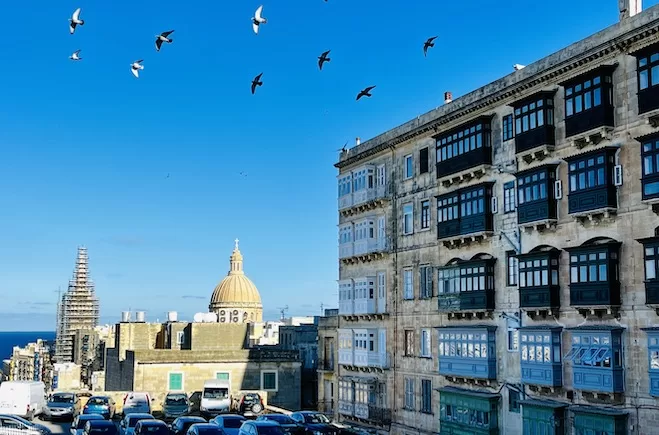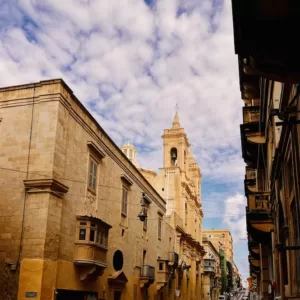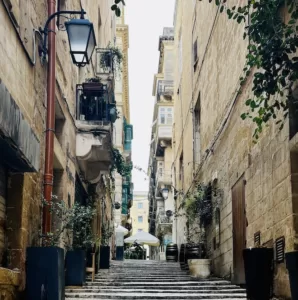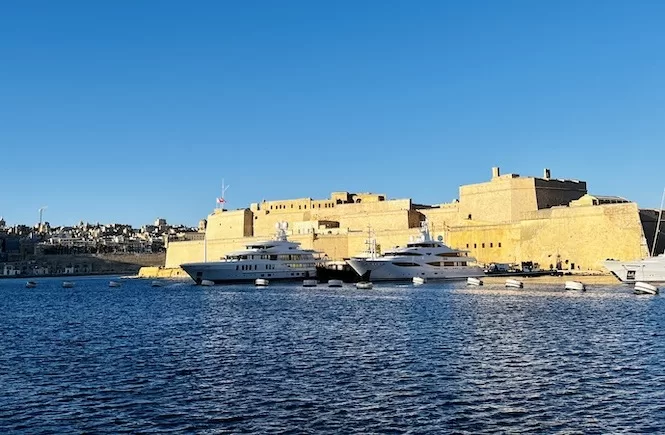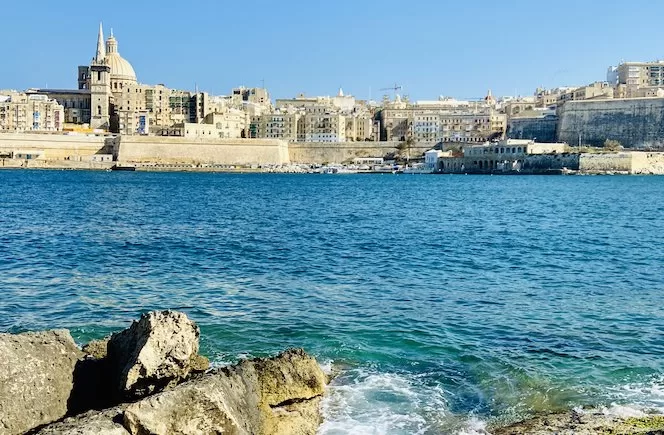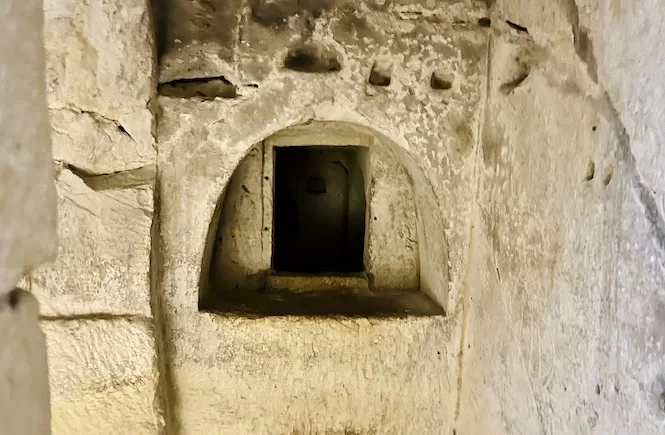Just a quick heads up – some of the links I share on this site are affiliate links. That means if you click on one and make a purchase, I may earn a small commission at no extra cost to you. Your support through these links helps me create valuable content.
Malta may be small, but it’s rich with three UNESCO World Heritage Sites. Its strategic location and vibrant culture have attracted visitors for centuries.
Living in Malta since 2011, I’ve explored these remarkable sites firsthand. In this blog, I share Malta’s historical treasures with you.
Why are these Malta heritage sites so interesting? Megalithic Temples are ancient and mysterious. The Ħal Saflieni Hypogeum is a fascinating underground labyrinth. Valletta’s streets are alive with history.
In this blog, I guide you through Malta’s heritage. You’ll get personal insights from my visits. I’ll also provide interesting historical facts.
UNESCO World Heritage Sites: What are They?
UNESCO stands for United Nations Educational, Scientific and Cultural Organization. It works to identify, guard, and maintain areas that are both culturally and naturally important to everyone.
“World Heritage” is a term that categorises certain places as part of the world’s collective heritage that is passed on from generation to generation.
There are two types of UNESCO World Heritage Sites. The first category of cultural heritage sites gives a glimpse into the past.
In the second category are places of unparalleled natural beauty and value – for example, biosphere reserves and picturesque landscapes.
UNESCO World Heritage Sites in Malta: Megalithic Temples
The Megalithic Temples of Malta are one of the oldest freestanding structures in the world. They are considered some of the most impressive prehistoric monuments in Europe.
There are seven prehistoric temples in Malta. They date back to between 3600 BCE and 2500 BCE.
These ancient temples are built with complex architectural designs, including monolithic stone circles, altars, and chambers. Their exact purpose is still a mystery. People most likely used them for religious rituals or communal gatherings.
The Megalithic Temples are spread all over Malta. Below is a map that includes megalithic heritage sites. You can see the temple names by hovering over the pins.
The temples are all different, but they all have an elliptical court at the front and a curved facade. It is evident from the horizontal rows of masonry that these structures had corbelled roofs.
For that era, this was quite a sophisticated development. In addition, the temples have perforated decorative panels or depict animals, plants, and trees.
Need advice on renting a car in Malta? Here’s my guide with insider tips on everything you need to know.
Ġgantija Temples
The most well-known temple is Ġgantija on Gozo Island – it’s believed to be one of the oldest freestanding structures in the world. In 1980, UNESCO listed the Ġgantija temples as a World Heritage Site.
These temples are just outside Xagħra village. They are made of large limestone blocks with roofed chambers. I remember I was amazed by the Ġgantija Temples. Their age and grandeur are simply breathtaking.
Dating over 5,000 years ago, Ġgantija remains the oldest of all Malta UNESCO Sites. Visiting these magnificent temples is a great way to experience an ancient era first-hand.
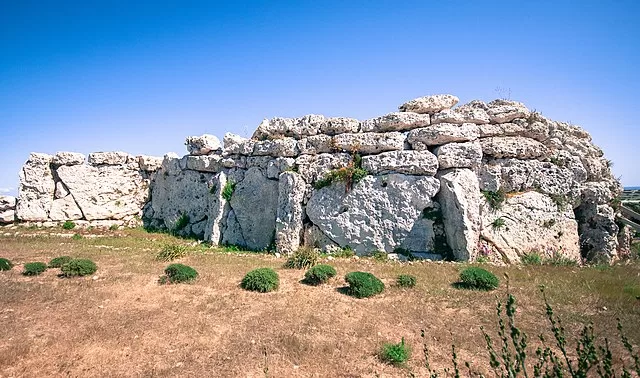
Credit: Photo by Bs0u10e01, licenced under CC BY-SA 4.0
Tarxien Temples
Another UNESCO Megalithic tempe site is Tarxien Temples, an archaeological complex located in Tarxien. They date back to approximately 3150 BC. In 1992, UNESCO recognised the Tarxien Temples as a World Heritage Site.
The Temples consist of three separate, but attached, temple structures. The site is especially notable for its intricate stonework. It includes carved reliefs of domestic animals, altars, and decorations with spirals and other patterns.
A carving showing a bull and sow sits between the South and Central temples, displaying the craftsmanship of the builders.
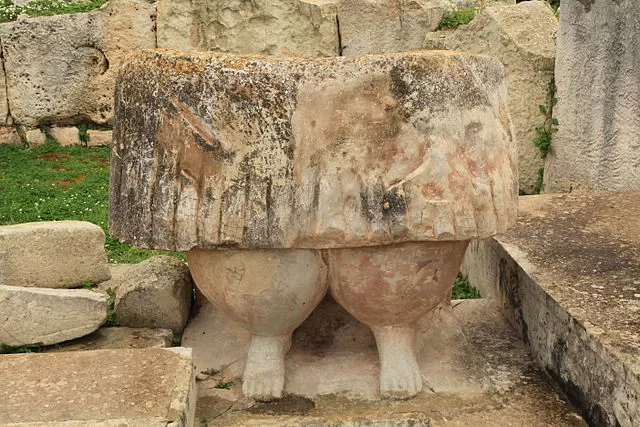
Credit: Photo by les, licenced under CC BY-SA 3.0
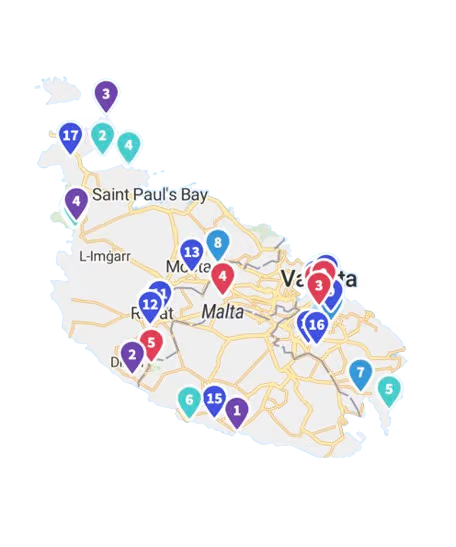
Get a FREE Attractions Map
Planning a trip to Malta, Gozo, or Comino? Get this free interactive map filled with insider tips, Google Maps links, and more.
Hagar Qim Temples
The Hagar Qim Temples are the most picturesque among the megalithic temples in Malta. Located on a hilltop, they have a beautiful view of the Mediterranean Sea. The water is deep blue, and you can see the islet of Filfla in the distance.
Initially discovered in 1839, the Hagar Qim temples date back to 3600-3200 BC. There were significant finds, including a decorated pillar altar and two table altars.
Also found at Hagar Qim were the famous ‘fat lady’ figurines. Now they are on display at the National Museum of Archaeology, Valletta.
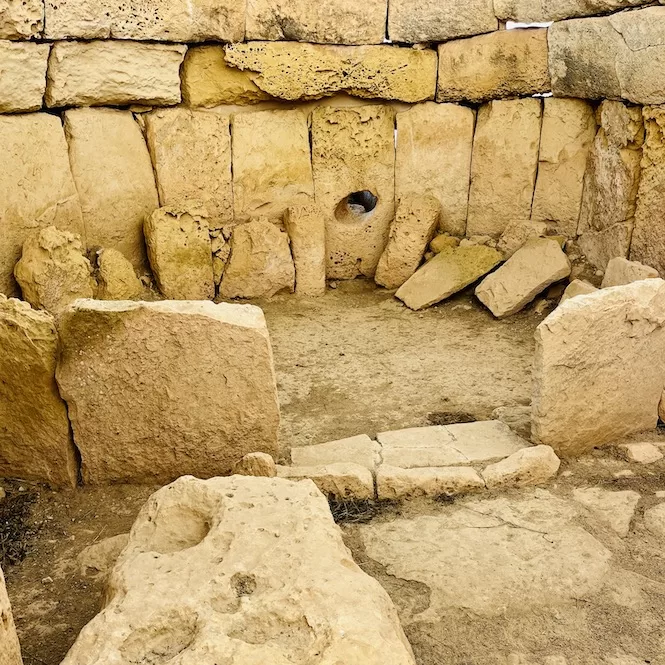
Mnajdra Temples
Five hundred meters away from Hagar Qim is another temple site called Mnajdra. Mnajdra was built around 4000 B.C. Its structure has three temples: the upper, middle, and lower.
During the vernal and autumnal equinoxes, sunlight illuminates the central axis. At the solstices, light illuminates the megaliths’ edges. That’s why it’s thought that the temples were used for astronomical observatories.
My experience at Mnajdra Temples during the equinox was out of this world. You should’ve seen the sunlight aligning perfectly with the stones – it was stunning!
According to archaeologists, the other two temples were used for sacrificing animals because they had flint knives and rope holes inside. Further, they served religious purposes such as curing illness and promoting fertility.
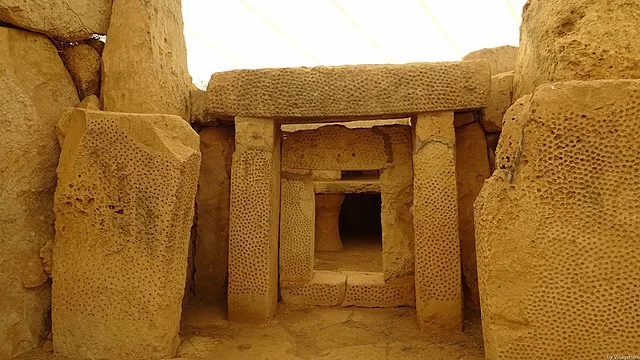
Credit: Photo by Cruccone, licenced under CC BY-SA 3.0
There are also private tours so you can get all the info from the licensed guides. Book one here:
Ta’ Ħaġrat Temples
Ta’ Ħaġrat is on the eastern outskirts of the village of Mġarr. This complex has two adjacent temples. Pottery dated to 3800-3600 BC indicates a town once existed there.
The complex has two parts, but they’re not as well planned as other Neolithic temples in Malta. There were no decorated blocks like other megalithic temples in Malta, but many artefacts were found.
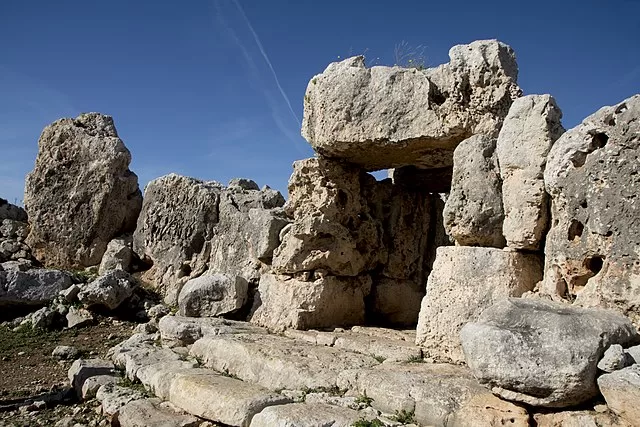
Credit: Photo by Karm photography, licenced under CC BY-SA 4.0
Ta’ Skorba Temples
The Ta’ Ħaġrat site is about one kilometre from the Ta’ Skorba temples. The Ta’ Skorba temples were excavated in the 1960s.
While excavating, they found two temples dating back to the Ggantija (3,600-3,200 BC) and Tarxien (3,150-2,500 BC) phases.
But it turns out that people lived in Skorba way before the temples were built. They also discovered a wall dating back to the Ghar Dalam phase (5,300-4,300 BC). Besides this wall, they found wheat, lentils, pottery, animal bones, and stone tools.
A few stone foundations of two huts that date back to 4,400-4100 BC were found east of the Tarxien phase temple. The shrines had goat skulls and female figurines, so it appears they were shrines.
The Megalithic Temples of Malta are a must-see for anyone interested in prehistoric architecture. These seven temples are some of Europe’s oldest and most impressive structures. They offer a unique glimpse into the lives of our ancestors.
If you’re curious about how these ancient people lived, add a visit to the Megalithic Temples of Malta to your bucket list.
UNESCO World Heritage Sites in Malta: Ħal Saflieni Hypogeum
It’s time for the second UNESCO site in Malta – the Ħal Saflieni Hypogeum.
The Ħal Saflieni Hypogeum is an underground temple complex located in Paola.
The Hypogeum was accidentally discovered in 1902 when workers cut cisterns for a new housing development. This structure has several interconnected chambers made of limestone rock decorated with stalagmites and stalactites.
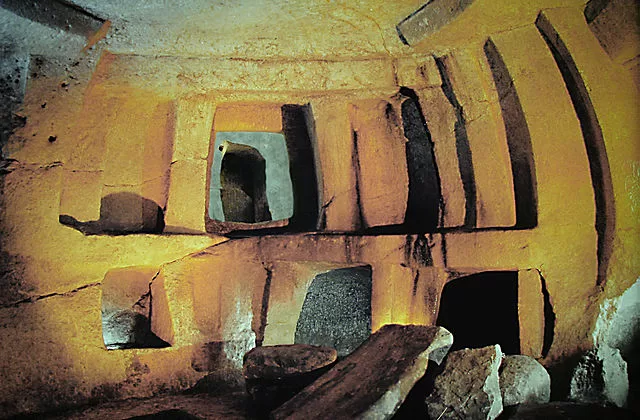
Credit: Photo by Hamelin de Guettelet, licenced under CC BY-SA 3.0
The Hypogeum complex was built around 4000-3500 BC, making it one of the world’s oldest surviving structures. The underground structure may have originated in a natural cave but expanded over time by cutting directly into the rock.
Based on pottery samples and human remains, the site was used from 4000 BC until around 2500 BC.
Many of the sculptures and paintings in the Hypogeum depict scenes of ancient life, including hunting scenes and religious symbols. Many tombs and chambers were used to bury people.
The hypogeum has multiple levels and you can go to them all during the tour. Walking down into the Ħal Saflieni Hypogeum was unreal. It was so cool and echoing in there – I was captivated by it.
Its acoustics are among its most exciting features; when standing in certain sections of the Hypogeum, sound can travel a very long distance because of acoustic resonance.
Despite its age, the Hypogeum is still relatively well-preserved thanks to its protected location underground, making it an ideal destination for visitors who want to explore Malta’s ancient history.
Tours are available throughout the year and provide an insight into what life was like centuries ago in this part of the world.
If you’re looking for a way to learn more about Malta’s incredible history and culture, a visit to Ħal Saflieni Hypogeum should be on your list!
Valletta, UNESCO City
Since 1980, Valletta has been a UNESCO World Heritage Site. It’s like walking through a living museum! This city, with its ancient buildings, takes you back to the times when it was a bustling trade hub between Europe and North Africa during the Ottoman era. It’s so rich in history, it’s like stepping into a different time!
Today it’s home to Baroque palaces, churches, fortifications, monuments, gardens, and other sights that make up this gorgeous cityscape, and its waterfront area is full of shops and cafes.
In 1566, the Knights of St John founded Valletta. They designed it as one cohesive creation of the late Renaissance, with a uniform grid plan, underground tunnels and fortified walls.
Though World War II wrecked a lot of the city, most of its fabric has survived. You can see 320 monuments in Valletta. Saint John’s Cathedral, Auberge de Provence, Grandmaster’s Palace, Auberge de Castille, Auberge d’Arago, Manoel Theater and churches like Our Lady of Victory, St. Catherine and the Shipwreck of St Paul are some of the most notable.
UNESCO has recognised Valletta as a World Heritage Site because of its beauty. Check our my guide with self-guided map to discover top Valletta’s sites. This will give you all the information you need to enjoy your visit to this historic city.
If you want to understand Malta’s history well, take a walking tour in Valletta. Look at my guide for the best Valletta walking tours.
UNESCO World Heritage Sites: FAQ
Is Mdina a UNESCO World Heritage Site?
Mdina itself is not a UNESCO World Heritage Site. However, it’s a remarkable old city in Malta, known for its medieval and baroque architecture. Here is my guide to the top things to do in Mdina.
What is the significance of Valletta being a UNESCO World Heritage Site?
Valletta being a UNESCO World Heritage Site since 1980 highlights its historical importance. The city is like an open-air museum, showcasing centuries-old buildings from its days as a key trade port.
What are the oldest ruins in Malta?
The oldest ruins in Malta are the Megalithic Temples. These are some of the world’s oldest freestanding structures, dating back to around 3600 BCE.
How many UNESCO sites are in Malta?
Malta boasts three UNESCO World Heritage Sites. These include the ancient Megalithic Temples, the fascinating Ħal Saflieni Hypogeum, and the historic city of Valletta.
Are Malta’s ancient ruins older than the pyramids?
Yes, the Megalithic Temples in Malta are older than the Egyptian pyramids. They date back to around 3600 BCE, predating the pyramids by several centuries.
If you liked this post, check out my guide to other fascinating historical sites in Malta and Gozo. The experience of exploring them will not only give you an insight into Maltese culture but will also offer you a chance to experience something extraordinary and unique!
If you’re still planning your Malta vacation and eager to discover the best Malta has to offer, visit my guide to the best things to do and must-see sites. It’s an in-depth guide, featuring the top attractions, best beaches and hidden gems.
Have questions about your Malta trip? Join my FREE private Facebook group, Malta Travel Tips, where you can find helpful resources and connect with fellow travellers!

